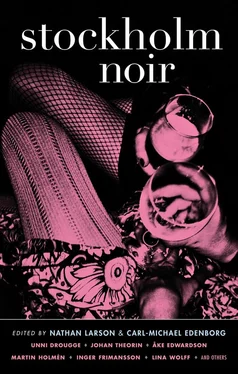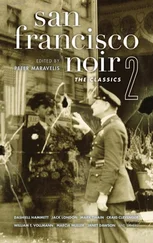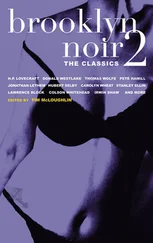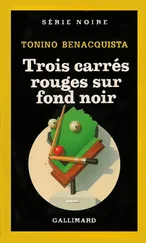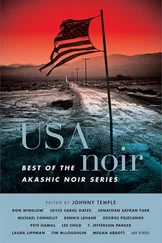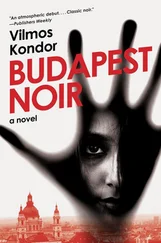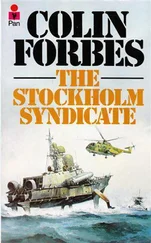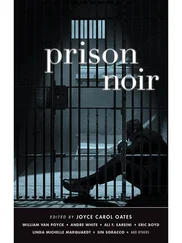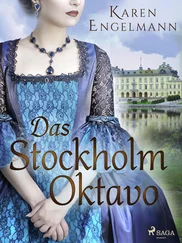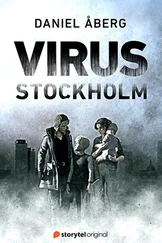Caroline Åberg - Stockholm Noir
Здесь есть возможность читать онлайн «Caroline Åberg - Stockholm Noir» весь текст электронной книги совершенно бесплатно (целиком полную версию без сокращений). В некоторых случаях можно слушать аудио, скачать через торрент в формате fb2 и присутствует краткое содержание. Город: New York, Год выпуска: 2016, ISBN: 2016, Издательство: Akashic Books, Жанр: Детектив, на английском языке. Описание произведения, (предисловие) а так же отзывы посетителей доступны на портале библиотеки ЛибКат.
- Название:Stockholm Noir
- Автор:
- Издательство:Akashic Books
- Жанр:
- Год:2016
- Город:New York
- ISBN:978-1-61775-297-1
- Рейтинг книги:3 / 5. Голосов: 1
-
Избранное:Добавить в избранное
- Отзывы:
-
Ваша оценка:
- 60
- 1
- 2
- 3
- 4
- 5
Stockholm Noir: краткое содержание, описание и аннотация
Предлагаем к чтению аннотацию, описание, краткое содержание или предисловие (зависит от того, что написал сам автор книги «Stockholm Noir»). Если вы не нашли необходимую информацию о книге — напишите в комментариях, мы постараемся отыскать её.
Copenhagen Noir
Helsinki Noir
Stockholm Noir — читать онлайн бесплатно полную книгу (весь текст) целиком
Ниже представлен текст книги, разбитый по страницам. Система сохранения места последней прочитанной страницы, позволяет с удобством читать онлайн бесплатно книгу «Stockholm Noir», без необходимости каждый раз заново искать на чём Вы остановились. Поставьте закладку, и сможете в любой момент перейти на страницу, на которой закончили чтение.
Интервал:
Закладка:
Walking through these areas today, spots like Husby and Tensta, you will see the Swedish equivalent of one of America’s most notorious housing projects — Chicago’s former Cabrini-Green Homes. The recent riots of May 2013 — needless to say, an extremely rare occurrence in a town like Stockholm — are perhaps a taste of things to come. Class hatred has always been an issue, even in a supposedly classless society, and now a racial element has been introduced that was not there before, simply because the society had been too homogenous to support it.
Look again at the term “good democratic citizens.” Or the term normaltrea , with its Latin root normal (“conforming to common standards”), implying that the ingredients of “normality” involve a happy couple, two children, and a modest apartment. This is the same type of utopian/uniform thinking that led to the growth of the American suburbs in the 1940s, intended largely to house returning soldiers and their families.
In Stockholm Noir , the city is presented as a gaping maw ready to devour your soul should you wander down the wrong alley... but it doesn’t limit itself to the urban, even in the earliest incarnations of the form. The city can represent a place to reinvent yourself, to duck out on your history, to begin again and rise like a phoenix.
Even so, as early as the late 1940s — with the American suburbs a model for the upwardly mobile, for those seeking escape from the shadow of the urban — even as they were being constructed, the suburbs were recognized as places of immense spiritual corruption. Put a twenty-two-year-old male with extreme post-traumatic stress disorder fresh from the battlefields of Europe in a remote box with his family. Put an unhappy wife next door, looking to escape her hellish life. Add yet another angry, damaged man to all of this, and put a smattering of children in everybody’s path. You have on your hands material for countless problematic situations.
In this volume, Johan Theorin’s “Still in Kallhäll” takes place in the “suburbs” of Stockholm, and his tale astutely reflects the violent envy felt by those on the periphery. Anna-Karin Selberg’s “Horse,” as well as Inger Frimansson’s “Black Ice” and Malte Persson’s “The Splendors and Miseries of a Swedish Crime Writer,” similarly take place on the outskirts. These areas are as indicative of the true nature of Stockholm as the neighborhoods depicted in Torbjörn Elensky’s “Kim,” set in the central, beatific Gamla Stan, one of the best-preserved medieval sectors in Northern Europe. Or in the piece by coeditor Nathan Larson, where the events take place in the tony upmarket shopping district of Stockholm, among the haute clothing racks of Swedish designers.
Wherever there is existential dread, where there are shadows, where there is money in the hands of some and not in others, where there is lust, wherever a human can try and fail, there is noir. All that is required is the insight that we will not make it out of this life alive, and we are damned to chaos. Everywhere misery and hatred live, there is noir. Where there is fear and despair, there is noir. This is where literature steps in and gives voice to that creeping sense that there is a deep disease, a rotten core within all this shiny economic growth.
Everywhere is noir. Even, and especially, in a paradise like Sweden, where the citizen is given every tool to go out and become a great success but is paradoxically held to an almost subliminal expectation to fall in line... and never shine so brightly that you disturb your neighbor.
Even as crimes rates remain extremely low, Swedes love scaring themselves... and above all they love their crime fiction. Traditionally, Swedish crime novels have been verbose, realist stories about good-hearted, weary cops, faced with all the things the country has in truth never seen: mass murderers, rampant mafioso, and overall mayhem. The public devours this stuff, needing stimulation of the fear center that is so rarely disturbed in Sweden. Tired, flaccid police procedurals, often overly long.
Swedish crime fiction hasn’t always been Liza Marklund, Stieg Larsson, and Leif G.W. Persson. In the early days, the politically incorrect Gustaf Ericsson wrote hard-boiled fiction, most famously The Man You Killed (1932). Many of the early Worker’s Movement writers, like Jan Fridegård, explored the darkest edges of Sweden at night. Remaining within the safety of the harmless parlor-crime genre, authors like Stieg Trenter and Sjöwall and Wahlöö churned out material in the vein of Agatha Christie or Ed McBain — well-meaning but formulaic, social democratic stuff. From this rose the Mankells and the Marklunds, coming to full flower with the Dragon Tattoo series, and thus the Swedish crime fiction miracle was realized.
The rest is best-selling history. But it is emphatically not noir.
In this anthology it’s our aim to showcase the darker, grittier, more intense world of Swedish noir fiction. Here the dangers lurking beneath the IKEA lifestyle are given free rein, and words are given to the ambivalence and despair of a model society. We have invited only a handful of the finest crime writers; the other contributors are poets, uncompromising literary fiction writers, hard-core literary beasts.
Crime is frequently a vehicle for noir rides, but it needn’t be. Noir is unfailingly realistic in the sense that there is always moral and narrative complexity — if you’re a sociopath, you can fuck someone’s partner, take everything he or she is worth, and get away with it. No problem. And if you’re a sociopath, there’s no universal law. You can get close to success, but dread will always follow, and there’s always the possibility of total collapse. It transcends gender, race, or political system. Noir is not nihilism; it is exaggerated realism. In this sense there can never, ever be a truly happy ending.
Kinda like life.
Nathan Larson & Carl-Michael Edenborg
Stockholm, Sweden
January 2016
Part I
Crime & Punishment
Stairway from Heaven
By Åke Edwardson
Translated by Laura A. Wideburg
Birkastan
The sun in the window behind me was starting to set over Stockholm. Like a freshly powdered corpse, it’s always most beautiful in the twilight. Stockholm can’t bear the day; it lives at night, like a vampire.
The light shone into the eyes of the woman walking into my office. She could see me as nothing more than a silhouette, but I could observe her in detail.
She didn’t wear much makeup. She sat down in what passed for an armchair in front of my desk. Well, neither the armchair nor the desk were worthy of the name, but they were what I owned and obviously she decided they were enough.
For what? For help?
That’s what goes through my head each time I meet a new client. Self-esteem is not one of my strong points. I’m still fairly good at my job, but my grip on things is growing more tenuous by the day. The signs are all there — sentimentality, compassion, thoughtfulness, all those complicating emotions tied to goodness — but I can scarcely help myself these days, especially that day, as I was hungover and had already downed the hair of the dog, a bad sign for sure, but of late my life has consisted of one bad sign after another, my job of bad news, really bad news. I had tried to lighten my depression by reading the book on the desk in front of me, but the words made no sense, even less than usual.
Human beings, in the shape of angels or demons, come into my office in Birkastan somewhat randomly. The woman sitting in the armchair in front of me, now crossing her legs, resembled an angel who had determined to forsake the light of heaven to glide down the stairway to the dark, to the earth. To me. But her eyes were cold, as if she’d already seen everything, been everywhere down here.
Читать дальшеИнтервал:
Закладка:
Похожие книги на «Stockholm Noir»
Представляем Вашему вниманию похожие книги на «Stockholm Noir» списком для выбора. Мы отобрали схожую по названию и смыслу литературу в надежде предоставить читателям больше вариантов отыскать новые, интересные, ещё непрочитанные произведения.
Обсуждение, отзывы о книге «Stockholm Noir» и просто собственные мнения читателей. Оставьте ваши комментарии, напишите, что Вы думаете о произведении, его смысле или главных героях. Укажите что конкретно понравилось, а что нет, и почему Вы так считаете.
